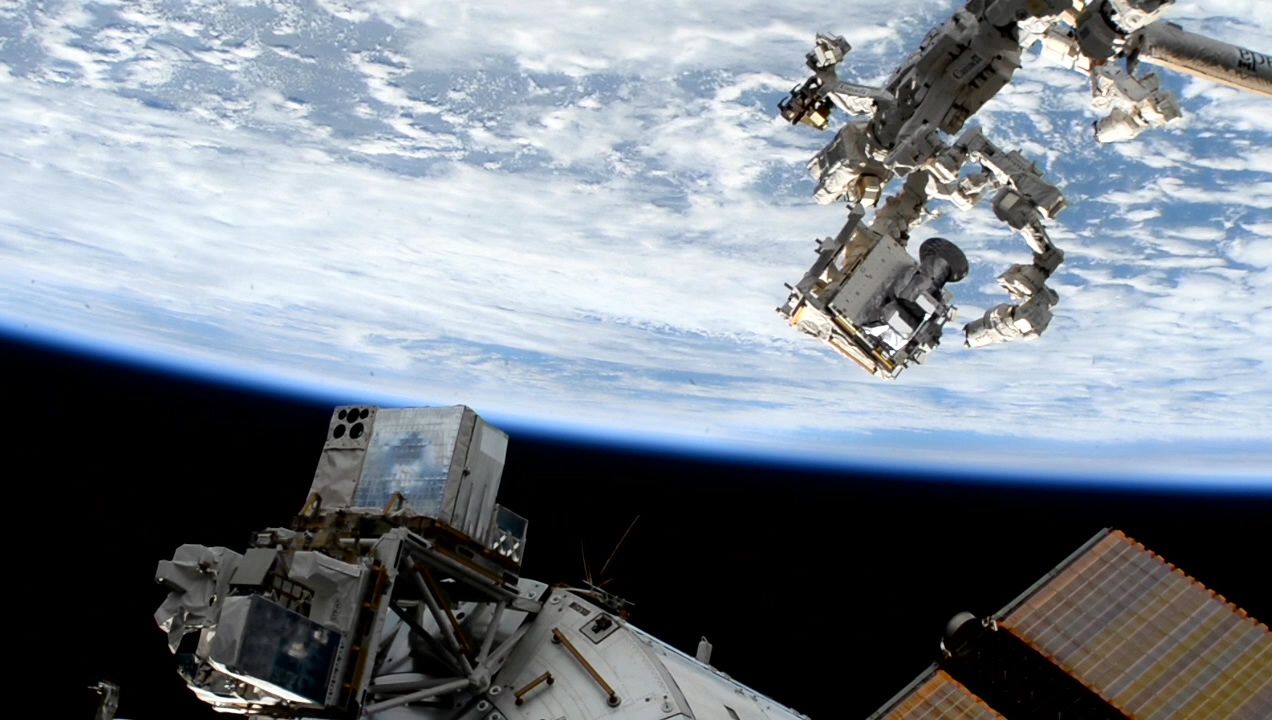Atmospheric Waves Experiment (AWE) Installation

NASA’s Atmospheric Waves Experiment (AWE) extraction from SpaceX’s Dragon cargo spacecraft onboard the International Space Station. Credit: NASA/International Space Station
On Saturday, Nov. 18, at 2 p.m. EST, installation of NASA’s Atmospheric Waves Experiment (AWE) was completed on the International Space Station.
By remotely controlling the Canadarm2 robotic arm, engineers first extracted AWE from SpaceX’s Dragon cargo spacecraft a couple days after it arrived at the station on Nov. 11. Then, on Saturday, using the Canadarm2 robotic arm again, engineers completed AWE’s installation onto the EXPRESS Logistics Carrier 1, a platform designed to support external payloads mounted to the International Space Station.
AWE is led by Ludger Scherliess at Utah State University in Logan, and it is managed by the Explorers Program Office at NASA’s Goddard Space Flight Center in Greenbelt, Maryland. Utah State University’s Space Dynamics Laboratory built the AWE instrument and provides the mission operations center.
To learn more visit science.nasa.gov/mission/awe
Watch footage of NASA’s Atmospheric Waves Experiment (AWE) extraction from SpaceX’s Dragon cargo spacecraft onboard the International Space Station and the installation of AWE onto the EXPRESS Logistics Carrier 1 – a platform designed to support external payloads mounted to the International Space Station.